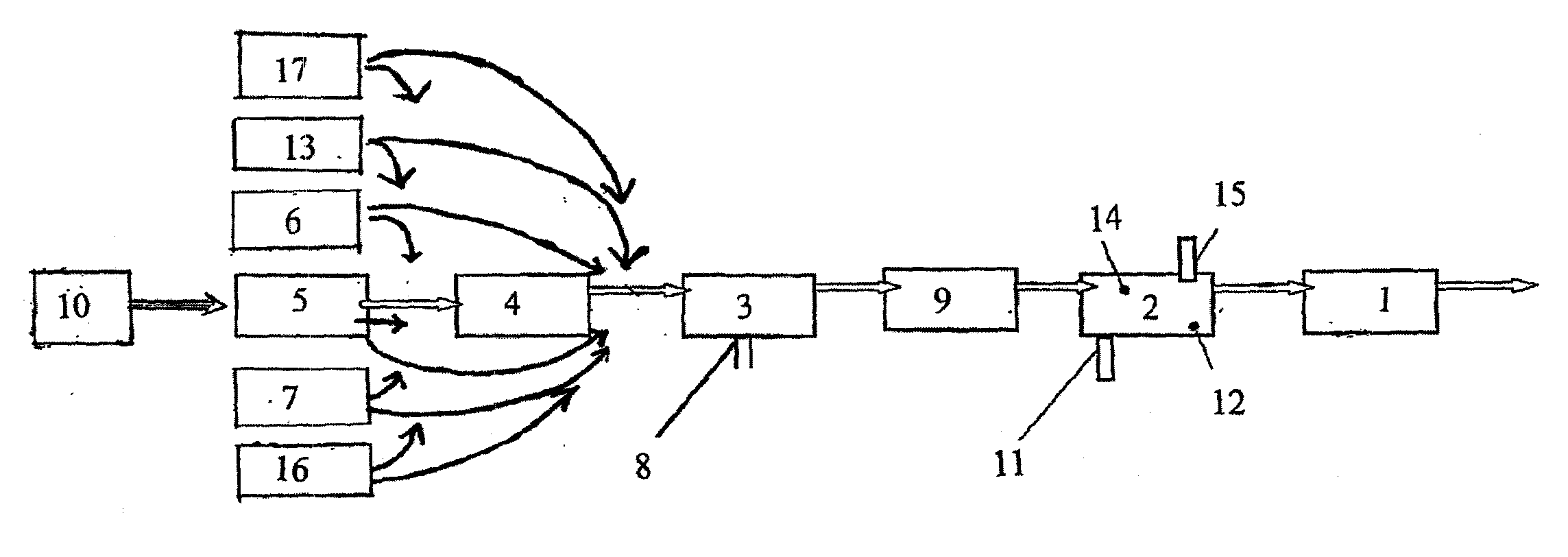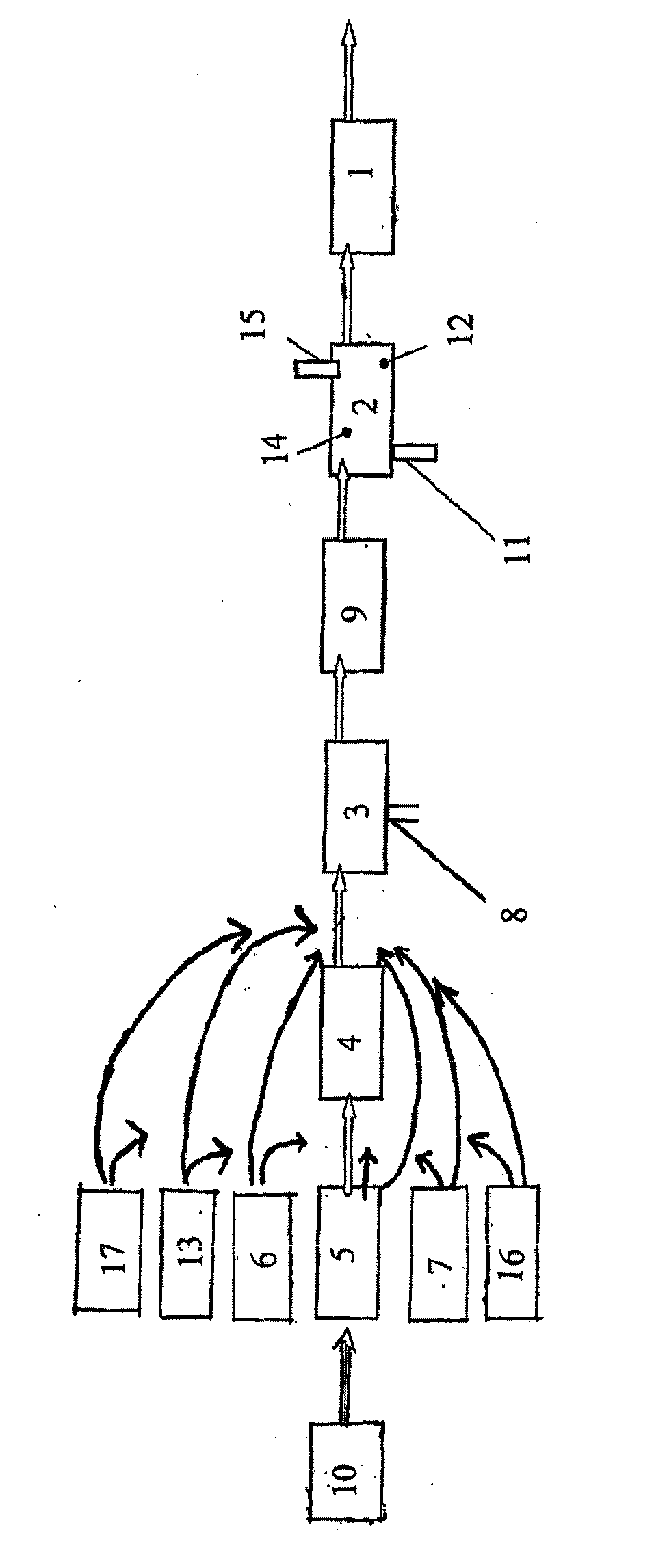Method, device and use of a device for producing fuel from moist biomass
- Summary
- Abstract
- Description
- Claims
- Application Information
AI Technical Summary
Benefits of technology
Problems solved by technology
Method used
Image
Examples
Embodiment Construction
[0043]FIG. 1 shows a press-molding unit 1 for producing the fuel pellets, upstream of which a drying unit 2 for thermally drying the biomass to be pressed is connected.
[0044]The drying unit 2 comprises moisture meters 12 for properly adjusting the desired degree of dryness of the biomass to be pressed, and a temperature sensor 14 for optimally controlling the drying process. In addition, the drying unit 2 comprises a fluid line 11 for discharging moisture that develops and an exhaust gas line 15 for discharging gases that develop during drying.
[0045]A unit for mechanical dehumidification (pressing or the like) 3, by means of which as much moisture as possible is mechanically removed from the moist biomass by way of pressing, centrifuging or the like, is connected upstream of the drying unit 2, so as to increase the economy of the thermal drying process, which is considerably more energy-consuming.
[0046]The dehumidification unit 3—like the drying unit 2—comprises a fluid line 8, by m...
PUM
| Property | Measurement | Unit |
|---|---|---|
| Content | aaaaa | aaaaa |
Abstract
Description
Claims
Application Information
 Login to View More
Login to View More - R&D
- Intellectual Property
- Life Sciences
- Materials
- Tech Scout
- Unparalleled Data Quality
- Higher Quality Content
- 60% Fewer Hallucinations
Browse by: Latest US Patents, China's latest patents, Technical Efficacy Thesaurus, Application Domain, Technology Topic, Popular Technical Reports.
© 2025 PatSnap. All rights reserved.Legal|Privacy policy|Modern Slavery Act Transparency Statement|Sitemap|About US| Contact US: help@patsnap.com


